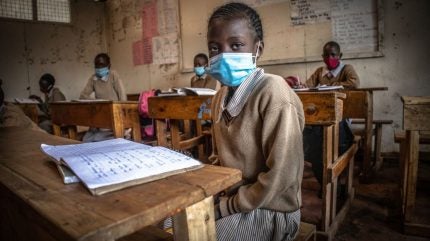
The world’s poorest countries are bearing the brunt of Covid-19’s hammering impact on global trade. This is also true, even more so in fact, with regards to foreign direct investment (FDI), another pillar of globalisation.
The pandemic simply worsened a pre-existing issue: the steady and significant downturn in global FDI since 2016, backdropped by an ecosystem that has, for decades, always been skewed towards developing countries, the source of most globally deployed capital.
Covid-19 made these problems even more apparent, with global FDI flows plunging by an enormous 35% in 2020, down to $1rtn from $1.5trn the previous year, according to the UN Conference on Trade and Development (UNCTAD). The latest data shows that global investment flows rebounded in the first half of 2021, but that recovery was highly uneven.
Less investment to the poorest countries
At first glance, it seemed as though the developing world had been spared Covid’s dramatic fall in FDI, with a drop of just 8% in 2020 compared with the developed world’s 58%.
However, these figures masked several things. For one, FDI to the developing world that year was sustained by robust investment across East Asia and India, while flows to the most fragile developing markets fell hard, especially across many parts of Africa. Second, the large drop in FDI to the developed world was due, in great part, to corporate restructuring and intrafirm financial flows.
On top of this, a more granular breakdown of the investment plunge showed that, in 2020, developing countries saw the greatest decrease in greenfield FDI, with the number of new announced projects falling by 42%, while international project finance deals – key for infrastructure upgrades – fell by 14%, according to UNCTAD’s data. This is part of a broad-base fall in greenfield FDI across the world in 2020, led by a decrease in new projects to industry and global value chains, especially electronics, automotives and chemicals.

US Tariffs are shifting - will you react or anticipate?
Don’t let policy changes catch you off guard. Stay proactive with real-time data and expert analysis.
By GlobalDataIt is important to emphasise just how much of a blow this has been for the world’s lowest-income nations. Greenfield FDI is key to their economic development. Of all types of FDI, it creates the most jobs and value-add, generally speaking. In the developed world, mergers and acquisitions (M&A) are, by far, the most predominant form of FDI (as well as the type of FDI that recovers fastest from economic shocks). However, in the least-developed economies there are fewer home-grown (or headquartered) companies being snapped up by businesses in advanced economies, hence the emphasis on greenfield FDI across lower value-add sectors – in particular, the lower end of agriculture, industry and manufacturing.
For example, a UK company setting up a brand new food processing factory in Mali – an example of greenfield FDI – is an activity that requires seamless international travel and logistics, even more so than the average M&A, which might see, for instance, a UK business buying a small tech company in the Netherlands.
The inequality is even clearer in 2021
The growing divergence in FDI flows between developed and developing economies has only become more apparent and pernicious in 2021. The former saw a mighty rebound in overall FDI, in sharp contrast to the latter.
Although global greenfield FDI is expected to grow by approximately 6% in 2022, after getting back to pre-shock levels in 2021, this recovery has been overwhelming directed towards the world’s high and middle-income countries, while the poorest have been left behind, comparatively speaking.
Part of the problem is that international companies, the majority of which are based in advanced economies, continue to err on the side of caution due to the Covid pandemic, thereby favouring more secure and familiar investments in developed markets, as opposed to emerging markets that tend to carry a higher baseline risk (as well as more travel/logistical requirements, as previously discussed).
To make matters worse, the world’s poorest economies are also suffering the most from the slow recovery of investment flows to sectors relevant to the UN Sustainable Development Goals (SDGs). Much as in 2020, the number of SDG-relevant investment projects to the least-developed countries declined precipitously in 2021, according to UNCTAD’s data. More specifically, SDG-relevant sectors in those countries saw new greenfield project announcements fall by 51%, while infrastructure project finance deals fell by 47%.
All of this means less much-needed investment to economies that were already very weak before the pandemic – especially with regards to power, food and agriculture, and health – thereby marking another blow to the 2030 Agenda for Sustainable Development and the post-pandemic recovery.
The aforementioned pressures showcase the economic importance of rapidly supporting vaccination programmes in developing countries, not to mention the ethical and health imperative. The developed world’s continued failure to do so is a mounting source of shame.


